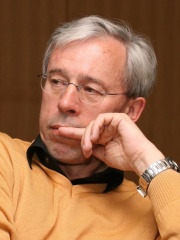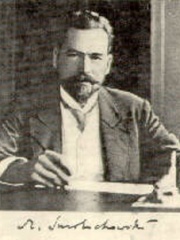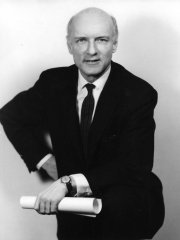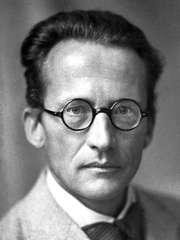



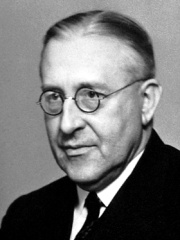

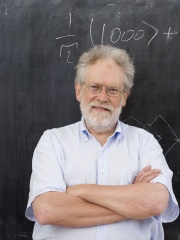
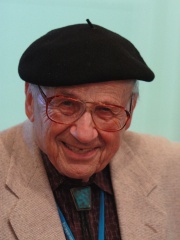
The Most Famous
PHYSICISTS from Austria
This page contains a list of the greatest Austrian Physicists. The pantheon dataset contains 851 Physicists, 21 of which were born in Austria. This makes Austria the birth place of the 8th most number of Physicists behind Italy, and Netherlands.
Top 10
The following people are considered by Pantheon to be the top 10 most legendary Austrian Physicists of all time. This list of famous Austrian Physicists is sorted by HPI (Historical Popularity Index), a metric that aggregates information on a biography's online popularity. Visit the rankings page to view the entire list of Austrian Physicists.

1. Erwin Schrödinger (1887 - 1961)
With an HPI of 84.23, Erwin Schrödinger is the most famous Austrian Physicist. His biography has been translated into 137 different languages on wikipedia.
Erwin Rudolf Josef Alexander Schrödinger ( SHROH-ding-er, German: [ˈʃʁøːdɪŋɐ] ; 12 August 1887 – 4 January 1961), sometimes written as Schroedinger or Schrodinger, was an Austrian–Irish theoretical physicist who developed fundamental results in quantum theory. In particular, he is recognized for devising the Schrödinger equation, an equation that provides a way to calculate the wave function of a system and how it changes dynamically in time. He coined the term "quantum entanglement" in 1935. In addition, Schrödinger wrote many works on various aspects of physics: statistical mechanics and thermodynamics, physics of dielectrics, color theory, electrodynamics, general relativity, and cosmology, and he made several attempts to construct a unified field theory. In his book, What Is Life?, Schrödinger addressed the problems of genetics, looking at the phenomenon of life from the point of view of physics. He also paid great attention to the philosophical aspects of science, ancient, and oriental philosophical concepts, ethics, and religion. He also wrote on philosophy and theoretical biology. In popular culture, he is best known for his "Schrödinger's cat" thought experiment. Spending most of his life as an academic with positions at various universities, Schrödinger—along with Paul Dirac—won the Nobel Prize in Physics in 1933 for his work on quantum mechanics, the same year he left Germany due to his opposition to Nazism. In his personal life, he lived with both his wife and his mistress which may have led to problems causing him to leave his position at Oxford. Subsequently, until 1938, he had a position in Graz, Austria, until the Nazi takeover when he fled, finally finding a long-term arrangement in Dublin, Ireland, where he remained until retirement in 1955, and where he allegedly sexually abused several minors.

2. Lise Meitner (1878 - 1968)
With an HPI of 80.92, Lise Meitner is the 2nd most famous Austrian Physicist. Her biography has been translated into 84 different languages.
Elise "Lise" Meitner ( MYTE-ner; German: [ˈliːzə ˈmaɪtnɐ] ; 7 November 1878 – 27 October 1968) was an Austrian and Swedish nuclear physicist who was instrumental in the discovery of nuclear fission. After completing her doctoral research in 1906, Meitner became the second woman to earn a doctorate in physics from the University of Vienna. She spent much of her scientific career in Berlin, where she was a physics professor and a department head at the Kaiser Wilhelm Institute for Chemistry. She was the first woman to become a full professor of physics in Germany. She lost her positions in 1935 because of the anti-Jewish Nuremberg Laws of Nazi Germany, and the 1938 Anschluss resulted in the loss of her Austrian citizenship. On 13–14 July 1938, she fled to the Netherlands with the help of Dirk Coster. She lived in Stockholm for many years, ultimately becoming a Swedish citizen in 1949, but relocated to Britain in the 1950s to be with family members. In mid-1938, chemists Otto Hahn and Fritz Strassmann at the Kaiser Wilhelm Institute for Chemistry demonstrated that isotopes of barium could be formed by neutron bombardment of uranium. Meitner was informed of their findings by Hahn, and in late December, with her nephew, fellow physicist Otto Robert Frisch, she worked out the physics of this process by correctly interpreting Hahn and Strassmann's experimental data. On 13 January 1939, Frisch replicated the process Hahn and Strassmann had observed. In Meitner and Frisch's report in the February 1939 issue of Nature, they gave the process the name "fission". The discovery of nuclear fission led to the development of nuclear reactors and atomic bombs during World War II. Meitner did not share the 1944 Nobel Prize in Chemistry for nuclear fission, which was awarded to her long-time collaborator Otto Hahn. Several scientists and journalists have called her exclusion "unjust". According to the Nobel Prize archive, she was nominated 19 times for the Nobel Prize in Chemistry between 1924 and 1948, and 30 times for the Nobel Prize in Physics between 1937 and 1967. Despite not having been awarded the Nobel Prize, Meitner was invited to attend the Lindau Nobel Laureate Meeting in 1962. She received many other honours, including the posthumous naming of element 109 meitnerium in 1997. Meitner was praised by Albert Einstein as the "German Marie Curie".

3. Wolfgang Pauli (1900 - 1958)
With an HPI of 78.12, Wolfgang Pauli is the 3rd most famous Austrian Physicist. His biography has been translated into 93 different languages.
Wolfgang Ernst Pauli ( PAW-lee; German: [ˈpaʊ̯li] ; 25 April 1900 – 15 December 1958) was an Austrian–Swiss theoretical physicist and a pioneer of quantum mechanics. In 1945, after having been nominated by Albert Einstein, Pauli received the Nobel Prize in Physics "for the discovery of the Exclusion Principle, also called the Pauli Principle". The discovery involved spin theory, which is the basis of a theory of the structure of matter. To preserve the conservation of energy in beta decay, Pauli proposed the existence of a small neutral particle, dubbed the neutrino by Enrico Fermi, in 1930. Neutrinos were first detected in 1956.

4. Ludwig Boltzmann (1844 - 1906)
With an HPI of 77.57, Ludwig Boltzmann is the 4th most famous Austrian Physicist. His biography has been translated into 77 different languages.
Ludwig Eduard Boltzmann ( BAWLTS-mahn or BOHLTS-muhn; German: [ˈluːtvɪç ˈeːduaʁt ˈbɔltsman]; 20 February 1844 – 5 September 1906) was an Austrian mathematician and theoretical physicist. His greatest achievements were the development of statistical mechanics and the statistical explanation of the second law of thermodynamics. In 1877 he provided the current definition of entropy, S = k B ln Ω {\displaystyle S=k_{\rm {B}}\ln \Omega } , where Ω is the number of microstates whose energy equals the system's energy, interpreted as a measure of the statistical disorder of a system. Max Planck named the constant kB the Boltzmann constant. Statistical mechanics is one of the pillars of modern physics. It describes how macroscopic observations (such as temperature and pressure) are related to microscopic parameters that fluctuate around an average. It connects thermodynamic quantities (such as heat capacity) to microscopic behavior, whereas, in classical thermodynamics, the only available option would be to measure and tabulate such quantities for various materials.
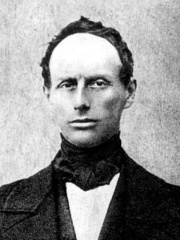
5. Christian Doppler (1803 - 1853)
With an HPI of 77.27, Christian Doppler is the 5th most famous Austrian Physicist. His biography has been translated into 75 different languages.
Christian Andreas Doppler (; German: [ˈdɔplɐ] ; 29 November 1803 – 17 March 1853) was an Austrian mathematician and physicist. He formulated the principle – now known as the Doppler effect – that the observed frequency of a wave depends on the relative speed of the source and the observer.

6. Victor Francis Hess (1883 - 1964)
With an HPI of 76.97, Victor Francis Hess is the 6th most famous Austrian Physicist. His biography has been translated into 80 different languages.
Victor Franz Hess (German: [ˈvɪktɔʁ ˈfʁants ˈhɛs]; 24 June 1883 – 17 December 1964) was an Austrian–American experimental physicist who shared the 1936 Nobel Prize in Physics with Carl David Anderson for his discovery of cosmic rays.

7. Victor Weisskopf (1908 - 2002)
With an HPI of 70.58, Victor Weisskopf is the 7th most famous Austrian Physicist. His biography has been translated into 33 different languages.
Victor Frederick "Viki" Weisskopf (also spelled Viktor; September 19, 1908 – April 22, 2002) was an Austrian-born American theoretical physicist and Director-General of CERN from 1961 – 1965.

8. Anton Zeilinger (b. 1945)
With an HPI of 69.76, Anton Zeilinger is the 8th most famous Austrian Physicist. His biography has been translated into 52 different languages.
Anton Zeilinger (German: [ˈanton ˈtsaɪlɪŋɐ]; born 20 May 1945) is an Austrian quantum physicist and Nobel laureate in physics of 2022. Zeilinger is professor of physics emeritus at the University of Vienna and senior scientist at the Institute for Quantum Optics and Quantum Information of the Austrian Academy of Sciences. Most of his research concerns the fundamental aspects and applications of quantum entanglement. In 2007, Zeilinger received the first Inaugural Isaac Newton Medal of the Institute of Physics, London, for "his pioneering conceptual and experimental contributions to the foundations of quantum physics, which have become the cornerstone for the rapidly-evolving field of quantum information". In October 2022, he received the Nobel Prize in Physics, jointly with Alain Aspect and John Clauser for their work involving experiments with entangled photons, establishing the violation of Bell inequalities and pioneering quantum information science.

9. Walter Kohn (1923 - 2016)
With an HPI of 67.71, Walter Kohn is the 9th most famous Austrian Physicist. His biography has been translated into 56 different languages.
Walter Kohn (German pronunciation: [ˈvaltɐ ˈkoːn]; March 9, 1923 – April 19, 2016) was an Austrian-American theoretical physicist and theoretical chemist. He was awarded, with John Pople, the Nobel Prize in Chemistry in 1998. The award recognized their contributions to understanding the electronic properties of materials. In particular, Kohn played the leading role in the development of density functional theory, which made it possible to calculate quantum mechanical electronic structure by equations involving the electronic density (rather than the many-body wavefunction). This computational simplification led to more accurate calculations on complex systems as well as many new insights, and it has become an essential tool for materials science, condensed-phase physics, and the chemical physics of atoms and molecules.
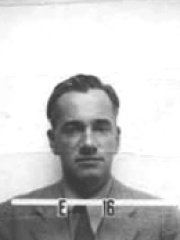
10. Otto Robert Frisch (1904 - 1979)
With an HPI of 67.25, Otto Robert Frisch is the 10th most famous Austrian Physicist. His biography has been translated into 43 different languages.
Otto Robert Frisch (1 October 1904 – 22 September 1979) was an Austrian-born British physicist who worked on nuclear physics. With Otto Stern and Immanuel Estermann, he first measured the magnetic moment of the proton. With his aunt, Lise Meitner, he advanced the first theoretical explanation of nuclear fission (coining the term) and first experimentally detected the fission by-products. Later, with his collaborator, Rudolf Peierls, he designed the first theoretical mechanism for the detonation of an atomic bomb in 1940. Leading the Los Alamos Critical Assemblies experiments in 1945, he oversaw the world's first prompt criticality in the Dragon device.
People
Pantheon has 21 people classified as Austrian physicists born between 1795 and 1952. Of these 21, 3 (14.29%) of them are still alive today. The most famous living Austrian physicists include Anton Zeilinger, Fritjof Capra, and Peter Zoller. The most famous deceased Austrian physicists include Erwin Schrödinger, Lise Meitner, and Wolfgang Pauli.
Living Austrian Physicists
Go to all RankingsAnton Zeilinger
1945 - Present
HPI: 69.76
Fritjof Capra
1939 - Present
HPI: 66.07
Peter Zoller
1952 - Present
HPI: 52.84
Deceased Austrian Physicists
Go to all RankingsErwin Schrödinger
1887 - 1961
HPI: 84.23
Lise Meitner
1878 - 1968
HPI: 80.92
Wolfgang Pauli
1900 - 1958
HPI: 78.12
Ludwig Boltzmann
1844 - 1906
HPI: 77.57
Christian Doppler
1803 - 1853
HPI: 77.27
Victor Francis Hess
1883 - 1964
HPI: 76.97
Victor Weisskopf
1908 - 2002
HPI: 70.58
Walter Kohn
1923 - 2016
HPI: 67.71
Otto Robert Frisch
1904 - 1979
HPI: 67.25
Berta Karlik
1904 - 1990
HPI: 61.33
Marian Smoluchowski
1872 - 1917
HPI: 60.90
Heinz von Foerster
1911 - 2002
HPI: 59.33
Overlapping Lives
Which Physicists were alive at the same time? This visualization shows the lifespans of the 18 most globally memorable Physicists since 1700.


